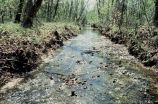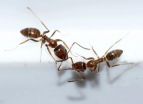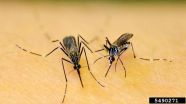(Press-News.org) Amsterdam, May 12, 2015 - Wearable E-skin that can measure heart rate and blood pressure, and paper diagnostic machines the size of a credit card that can give instant readings on blood and saliva samples are two new bio-sensing technologies presented at Elsevier's 4th International Conference on Bio-Sensing Technology in Lisbon, Portugal on 12 May 2015.
Bio-sensors can detect and analyze data to give patients information on their heart rate and blood pressure, blood sugar and hormone levels, and even test whether they are infected with antibiotic-resistant bacteria. This detection technology is a step forward in personal medicine, giving patients real-time information about how their bodies are functioning and suggesting the most suitable treatments.
Professor Anthony Turner, Head of the Biosensors & Bioelectronics Centre at Linköping University, Sweden, has developed an instrument the size of a credit card that can analyse blood and saliva samples. It is simple to use: you switch it on by pressing a button, then apply your sample to a circle in the bottom right corner and wait for a digital reading to be displayed and even sent to your mobile phone.
The whole instrument is printed on the card using a screen-printing technique. It could be used to monitor diabetes, kidney disease and heart disease, or to detect cancer. This, says Professor Turner, could turn a 2500-year-old paradigm on its head and put the power in the patient's hands.
"We're on the cusp of an entirely new era - not just for bio-sensing, but for measurements in healthcare and diagnostics generally," said Professor Turner. "Until now, we have been used to going to a doctor, who endows us with some wisdom and retains information about us, and then waiting to see if we get better. Modern sensors and telecommunications are rebalancing this power; in the future, patients could have the information, while physicians provide a service."
The printed instruments are the result of a collaboration between Linköping University and Swedish ICT non-profit Acreo, and the team is now looking for corporate partners to work with to mass-produce them. At just €5 each - a cost that's expected to fall to €0.50 - the paper diagnostic instruments offer an inexpensive way to analyse samples.
"When I started doing electrochemistry 30 years ago, an instrument like this would have been the size of a filing cabinet, and would have cost me €10,000," said Professor Turner. "We've now got the technology figured out - we had to combine the area of printed electronics and printed biosensors; it's the first time anyone has printed an entire instrument."
This means they have the potential to provide patients and doctors in developing countries with accessible, affordable medical tests. For example, the printed card could be made part of the packaging of antibiotics, helping determine which antibiotic would be best to treat a patient's infection.
Such printable devices could also be worn like plasters or contact lenses, transmitting information to mobile phones. Similarly, e-skin devices are also designed to be wearable and portable, and to transmit data about how a patient's body is functioning.
Professor Ting Zhang, from Suzhou Institute of Nano-Tech and Nano-Bionics, Chinese Academy of Sciences, China, is presenting a new kind of e-skin at the Conference. E-skin is developed based on flexible electronic technology and nanotechnology; because of its unique ability to detect tiny changes in pressure, e-skin can be used to monitor blood pressure, heart rate and wrist pulse.
Professor Zhang and his team have developed two key aspects of the technology - making the sensor element more sensitive and making the material more flexible - bringing wearable diagnostic systems a step closer. They have used carbon nanotubes and sheets of graphene only a few atoms thick to construct ultra-sensitive, transparent and flexible e-skin.
"We're very excited to present our new technology," said Professor Zhang. "We've shown that the e-skin can be used to monitor many different human physiological signals. We believe our new material can give real-time diagnosis of diseases and provide an instant health assessment while a patient is wearing it."
Bio-sensing technologies are gaining momentum in areas like health, the environment and security. The conference brings together leaders from industry and academia to exchange and share their experiences, present research results, explore collaborations and spark new ideas, with the aim of developing new projects and exploiting new technology for bio-sensing applications.
INFORMATION:
Presentation details:
"The Paper Potentiostat" by Professor Anthony Turner and "Flexible Nanoelectronic Skin for Wearable/attachable Health Applications" by Professor Ting Zhang are being presented on 12 May 2015 at Elsevier's 4th International Conference on Bio-Sensing Technology in Lisbon, Portugal.
For more information, contact Elsevier's Newsroom at newsroom@elsevier.com or +31 20 4853564.
About the 4th International Conference on Bio-Sensing Technology
Following the success of the first 3 conferences, the 4th International Conference on Bio-Sensing Technology will continue to bring together leaders from industry and academia to exchange and share their experiences, present research results, explore collaborations and to spark new ideas, with the aim of developing new projects and exploiting new technology for bio-sensing applications. http://www.biosensingconference.com.
For more information go to: Elsevier Connect: http://www.elsevier.com/connect/how-printable-testing-kits-could-turn-healthcare-upside-down
About Elsevier
Elsevier is a world-leading provider of information solutions that enhance the performance of science, health, and technology professionals, empowering them to make better decisions, deliver better care, and sometimes make groundbreaking discoveries that advance the boundaries of knowledge and human progress. Elsevier provides web-based, digital solutions -- among them ScienceDirect, Scopus, Elsevier Research Intelligence and ClinicalKey -- and publishes over 2,500 journals, including The Lancet and Cell, and more than 33,000 book titles, including a number of iconic reference works. Elsevier is part of RELX Group plc, a world-leading provider of information solutions for professional customers across industries. http://www.elsevier.com
SAN FRANCISCO, CA--MAY 11, 2015--Scientists have discovered a way to regrow bone tissue using the protein signals produced by stem cells. This technology could help treat victims who have experienced major trauma to a limb, like soldiers wounded in combat or casualties of a natural disaster. The new method improves on older therapies by providing a sustainable source for fresh tissue and reducing the risk of tumor formation that can arise with stem cell transplants.
The new study, published in Scientific Reports, is is the first to extract the necessary bone-producing ...
First there were canaries in coal mines, now there are microbes at nuclear waste sites, oil spills and other contaminated environments. A multi-institutional team of more than 30 scientists has found that statistical analysis of DNA from natural microbial communities can be used to accurately identify environmental contaminants and serve as quantitative geochemical biosensors. This study was sponsored by ENIGMA, a U.S. Department of Energy (DOE) Office of Science "Scientific Focus Area Program" based at the Lawrence Berkeley National Laboratory (Berkeley Lab).
"Changes ...
Researchers at Case Western Reserve University combined finely crafted nanoparticles with one of nature's potent disrupters to prevent the spread of triple-negative breast cancer in mouse models.
The highly aggressive cancer subtype is difficult to manage and, currently, the FDA has no approved targeted treatments. But striking results from a new study, published in the journal Cancer Research make the researchers optimistic they have a potential game-changer for triple negative cancer and more.
"There are multiple targets within a cell," said William Schiemann, professor ...
Pregnant women who exercise can significantly lower the risk of undergoing Caesarean sections and giving birth to large babies, a University of Alberta study has found.
Prenatal exercise has been suggested to be a means to prevent childhood obesity through a "normalization" in birth weight (ie. reducing the risk of having a large baby at birth). University of Alberta researchers conducted a meta-analysis to analyze 28 randomized control studies encompassing 5,322 women that looked at the influence of maternal exercise on baby outcomes.
"We found that women who exercised ...
In a study that compared three sites within the Dja Conservation Complex in Cameroon, Africa, investigators found that the presence of a conservation research project acts as a deterrent to chimpanzee and gorilla poachers, and community awareness and involvement in research lead to an increased value of apes and intact forests to local people, thus limiting hunting practices.
The results provide evidence that the mere existence of research programs exerts a positive impact on the conservation of wildlife in their natural habitats.
"It's important to recognize the effectiveness ...
Mass shootings at the hands of unhinged loners - such as those in Aurora, Colorado; Santa Barbara, California, and Newtown, Connecticut - perpetuate a commonly held belief that mental illness triggers violent crimes.
But a new study from the University of California, Berkeley, shows that hallucinations and delusions associated with psychiatric disorders seldom foreshadow acts of aggression.
In a painstaking review of 305 violent incidents in the United States, the researchers found that only 12 percent were preceded by psychosis. While numerous studies have found that ...
When ants go exploring in search of food they end up choosing collective routes that fit statistical distributions of probability. This has been demonstrated by a team of mathematicians after analysing the trails of a species of Argentine ant. Studies like this could be applied to coordinate the movement of micro-robots in cleaning contaminated areas for example.
Scientists have yet to discover the mechanisms explaining how flocks of birds, shoals of fish, lines of ants and other complex natural systems organise themselves so well when moving collectively.
To tackle ...
Scientists at a U.S. Army research center have modified an assay that tests whether or not a sample of mosquitoes harbors the virus responsible for the disease known as chikungunya (CHIKV), long a problem in the Old World tropics but recently established in the Americas. Their assay is described in an article in the Journal of Medical Entomology.
Health workers now have a quick way to detect the presence of the CHIKV virus within an hour, rather than waiting for results of laboratory tests that take days, or even weeks. It's done with a chemical dipstick, the same kind ...
KNOXVILLE--The reaction most people have when they hear the word bacteria is rarely a good one.
While it's true that food- and water-borne bacteria cause untold illnesses and even death around the world, a team of researchers from the University of Tennessee, Knoxville, and Oak Ridge National Laboratory has found a way to use bacteria to help prevent some of the very symptoms most people associate with them.
Terry Hazen, the Governor's Chair for Environmental Biotechnology, a joint UT-ORNL appointment, is working with a team of researchers who have developed a method ...
MAYWOOD, IL - Among the deadliest cancers is a rare malignancy called mesenchymal chondrosarcoma, which begins in cartilage around bones and typically strikes young adults.
Ten-year survival has been reported to be as low as 20 percent. But a Loyola University Medical Center study has found survival is not as dismal as prior reports. Among 205 cases examined, more than half (51 percent) of patients survived at least five years, and 43 percent survived at least 10 years, the study found.
The study by senior author Lukas Nystrom, MD, and colleagues was reported at the Mid-America ...


